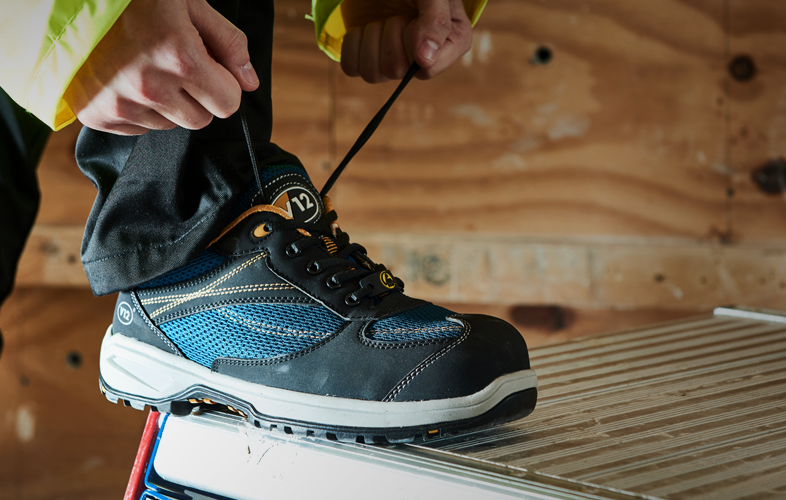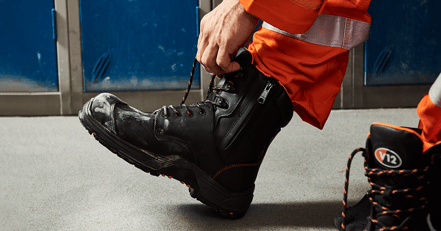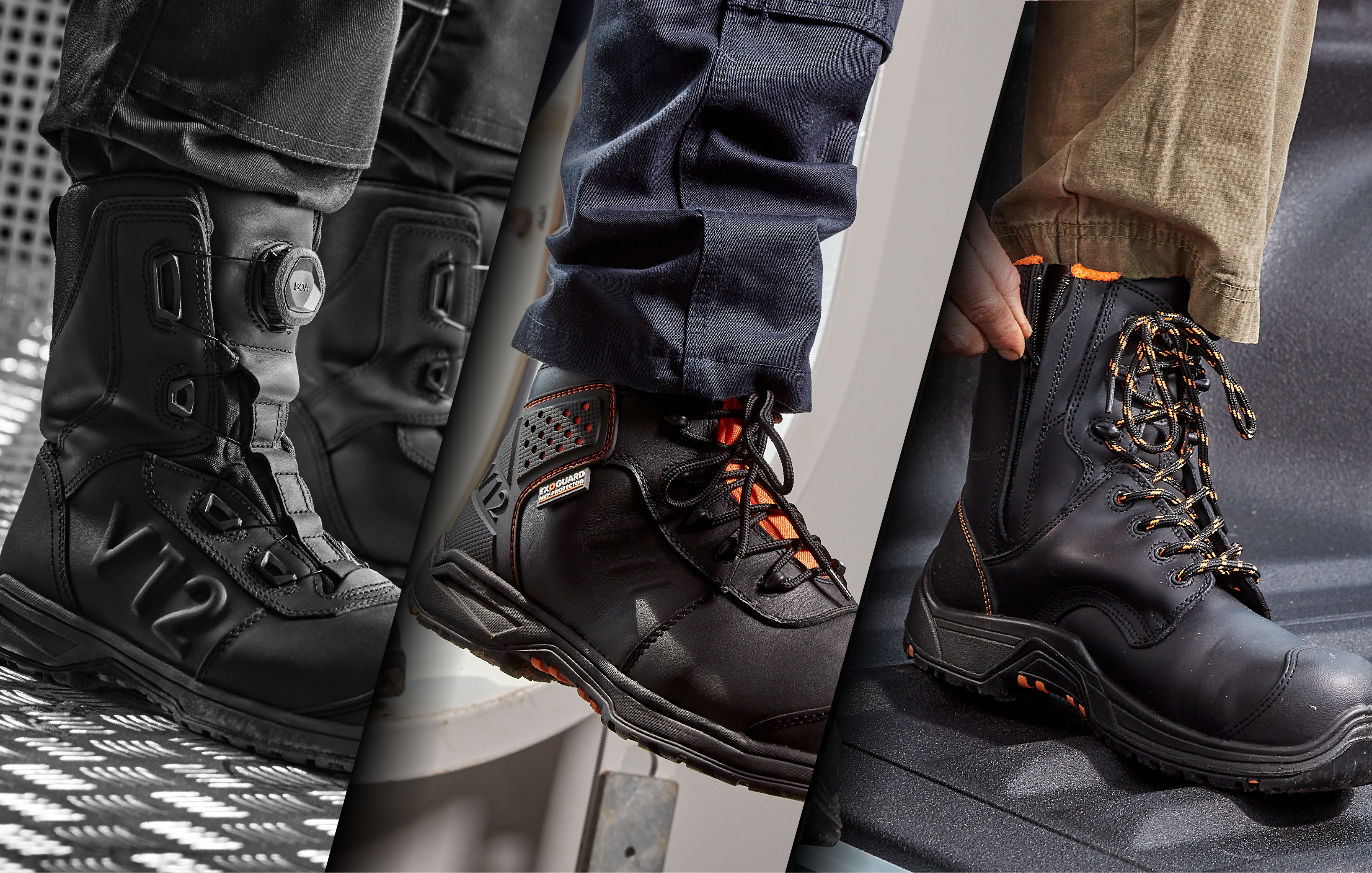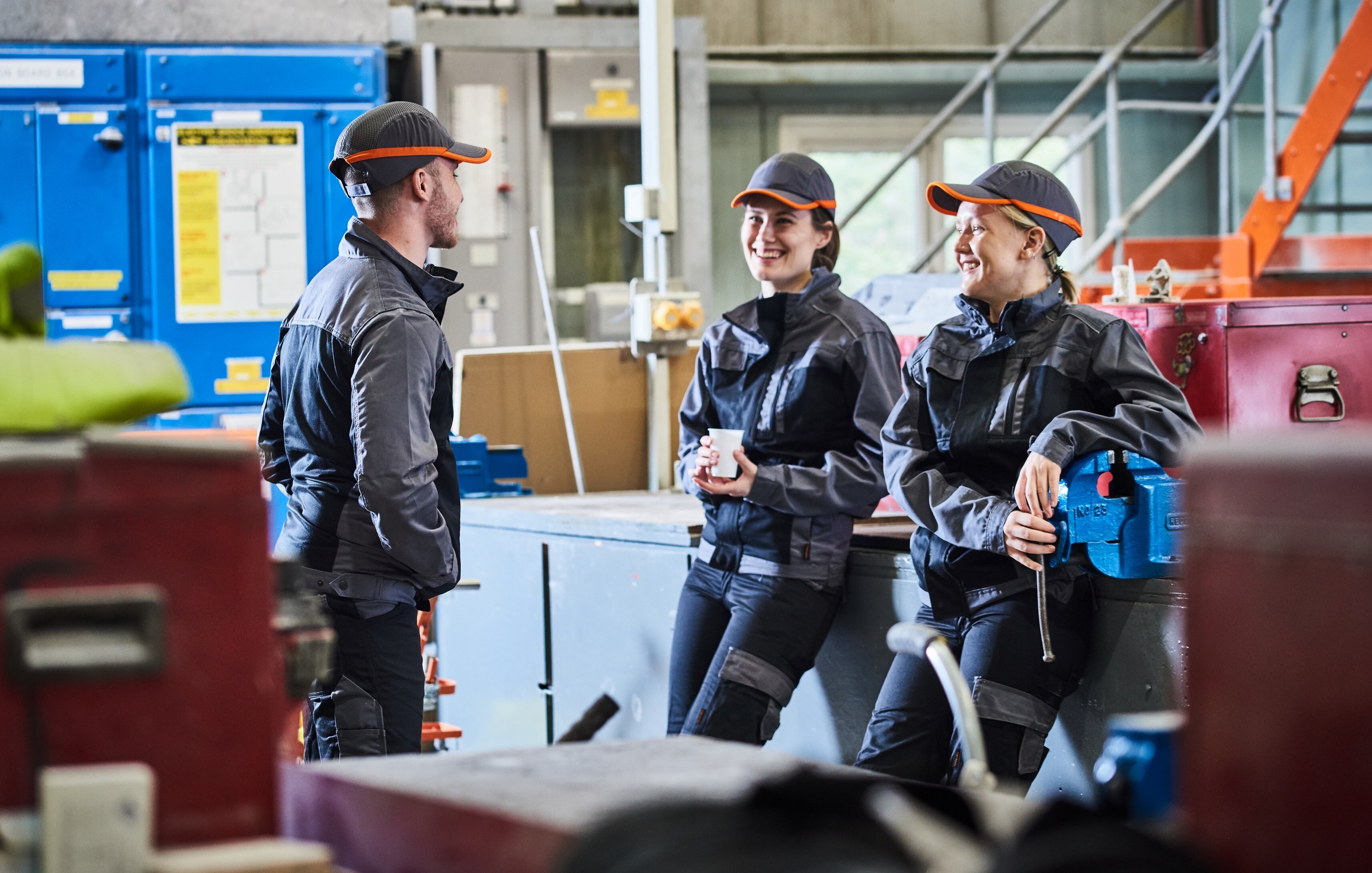At first glance, ‘How to correctly wear your safety boots’ seems like a topic with a pretty straightforward solution doesn’t it? But to get the best safety and comfort out of your work boots, there’s a bit more to it than you might think.
Afterall, a safety boot is a complex piece of PPE with lots of different materials and components. That’s why in this blog, we’re going to give you the essential know-how to make sure you’re wearing your safety boot in a way that gives you long-lasting safety and comfort.
LACING
Tying laces securely is a good rule for any footwear, but in a safety boot - it’s crucial. Busy workplaces like construction sites, warehouses or factories will feature a lot of snagging risks including rebar, trailing cables and equipment at foot height. Working in a safety-critical environment is hazardous enough without wearers’ unfastened laces trailing around and causing further trips and falls.
Secondly, securely fastening laces can help avoid painful foot conditions such as blistering. Many think blisters are caused by footwear being too tight, but in fact they often occur due to footwear slipping around the foot and then rubbing on it due to loose lacing. So, if you want to avoid those painful bubbles of trouble, take your lacing seriously.
Finally, if your foot is in the correct position within the boot, should an accident occur, you're best protected against the hazard. Loosely laced boots cause feet to slip around, so they might not be in the right place to be protected by the relevant components.
Want to find out how you can lace your boots to avoid slippage and blistering? Watch below.
Tip: While it’s tempting to kick, slip or push off your work boots without untying the laces at the end of a shift, the few seconds of time you’ll save won’t seem worth it when your boots break. This method of removing footwear can damage the heel and can detach the back of the sole from the upper. Remember, your boots protect you – but it should work both ways.
ZIPS
While we’re on the subject of fastening, if your boots have a side zip – while this is supposed to be a convenient way to get them on and off - you shouldn’t see it as an optional fastening method. In other words, even if you also have a lacing system on your boots, ensure your zip is always done up. If it’s not, you’ll lose your ankle support.
Zip-sided boots are usually worn to make the material around the ankle closer and snug to support the ankle and reduce the risk of it getting injured through twisting or rolling. With the zip undone, this ankle support is gone.
As well as this, unfastened zips:
- Create a snagging hazard
- Will mean the boot can slip more easily, increasing the chances of tripping and blistering
- Will mean the boot will easily let in water and dirt
Pictured: V12's zip-sided Hi-leg boot VR620.01 Avenger.
SOCKS
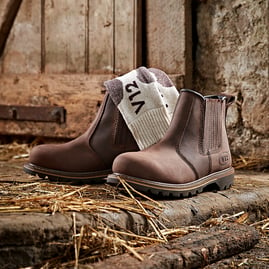 Another thing that can boost the work boot wearing experience is the right socks. If you’re wearing a sturdy boot with hefty componentry though, a thin sock might not be up to the job. When wearing a work boot, an effective sock should:
Another thing that can boost the work boot wearing experience is the right socks. If you’re wearing a sturdy boot with hefty componentry though, a thin sock might not be up to the job. When wearing a work boot, an effective sock should:
- Add a layer of warmth
- Add a layer of comfort
- Be made of thick, reinforced material
- Have a specific no-rub design
- Be heavy-duty but soft
Remember - your work boot will be specifically designed to give you protection and comfort, so we think you should take the same approach with socks. Afterall, your sock is the material that’s in contact with your skin – so make it the right material!
Need the right sock to go with your boots? With V12 work socks, rubbing or chaffing is never an issue because of our no-rub toe seams, while their luxury cotton and reinforced heel and toe gives wearers the perfect mix of strength and luxury. Go check them out here.
INSOLES
Insoles are another shoe and boot accessory that can enhance both the comfort and protection of a safety boot. However, there is a common misconception about insoles that’s important to understand and avoid.
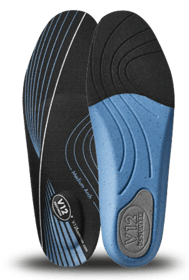 Some think putting an additional insole in a safety boot provides more comfort, and while that might be true for more casual footwear, when it comes to safety footwear, it’s not the case. Here’s why:
Some think putting an additional insole in a safety boot provides more comfort, and while that might be true for more casual footwear, when it comes to safety footwear, it’s not the case. Here’s why:
- With a second insole, the foot moves higher up - but if the toecap gets pushed down in the event of an accident, the toes will be higher and so closer to it and could get crushed by the very thing that’s supposed to be protecting them.
- Adding another insole pushes the foot up and out of alignment, causing it to rub on material designed to support it. And after a few steps, painful feet will be just around the corner.
- If a footbed is placed on top of an insole required to have a level of electrical resistance, the anti-static properties can be compromised, leaving the wearer vulnerable to shocks.
- When you make a step, you push off with your toes: but on two insoles, there will be too much padding so your joints can suffer. It will be like walking on an overly soft mattress – unstable, energy-sapping and eventually painful.
If you want to find out more on this, learn all you need to know in our insoles blog here.
SAFETY BOOT CARE
Once your safety boots are on, securely fastened, snagging risks out of the picture while your socks and insoles get to work bringing you additional comfort, you’ll be ready to focus on the job in hand. But these safety and comfort features won’t mean much if they’re not long-lasting. You’re going to need your boots to offer reliable protection from hazards and discomfort, so you need to optimise their features and extend their life with a good boot care regime.
Get all the information you need about cleaning, drying and storing your boots here.
BOOTS AND TROUSERS
The sight of workers tucking their trousers into their boots is a common one, but not one we recommend.
Workers often tuck their trousers into their boots to keep warm, and while it’s a logical move, it could be a dangerous one. If you’re working around sparks, they can find their way in and settle within the footwear and trouser material if tucked in. Similarly, if working around sharp and/or air-born materials such as swarf, your workwear should repel sharp or flammable hazards, not invite them in!
If the trouser tuck is your method of keeping the cold out, you and/or your employer should review your workwear and see if adjustments can be made to your materials and base layers. And perhaps most crucially, if tucking your trousers in is a way of combating cold feet or ankles, then you should look at your safety boot type for solutions.
In this instance, a hi-leg boot would be the perfect choice – its higher material would offer additional leg warmth, as well as aid dry feet by providing water resistance.
*note - while tucking in trousers isn't something we generally recommend, many industries and companies within those sectors will have different safety regulations depending on the hazards and environment involved. To be sure, always check your site rules for your employer's policy or advice on this.
THERE'S A BOOT FOR YOU IN OUR RANGE
Whatever comfort requirements you have, and whatever hazards you face at work, there is a boot for you in the extensive and award-winning V12 range. Use our Boot Finder to find your perfect pair, plus all the comfort accessories you need below.

